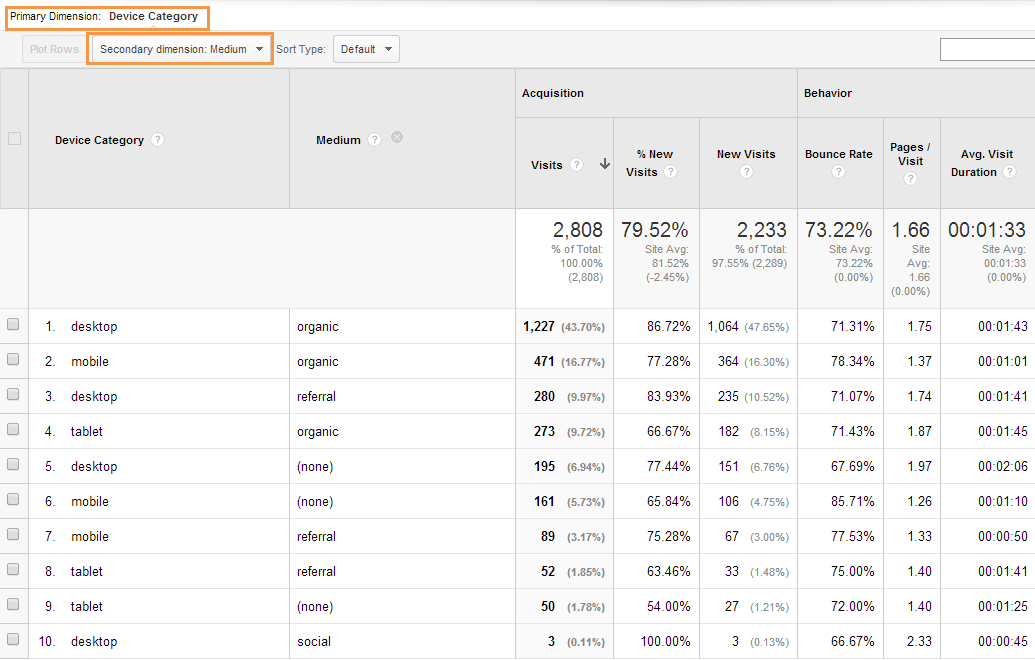Enhance Your Information Analysis Making Use Of Additional Measurement in Google Analytics
Checking out the capabilities of additional dimensions in Google Analytics opens up a world of possibilities for refining information analysis. By layering additional measurements onto primary data collections, a more detailed story emerges, shedding light on individual interactions and efficiency signs.
Comprehending Secondary Measurements
In the world of information analysis, an essential element to grasp is the idea of additional measurements and their significance in removing deeper understandings from Google Analytics reports. Second dimensions in Google Analytics describe extra parameters that can be contributed to the key dimension, enabling a much more thorough analysis of data. By including secondary measurements, experts can section and filter information to discover patterns, trends, and correlations that might not be apparent when checking out the data in its entirety. These secondary dimensions can supply context and a much more detailed understanding of individual habits, web traffic resources, and other essential metrics tracked by Google Analytics.

Advantages of Utilizing Secondary Dimensions
When analyzing data in Google Analytics, the usage of secondary measurements offers vital insights into individual habits and efficiency metrics. By including a second measurement to your key information, you can dive much deeper right into the characteristics of your site site visitors and their communications. One of the key benefits of making use of second dimensions is the capability to sector and contrast information better. This division enables you to recognize exactly how various variables, such as demographics or website traffic sources, influence user actions and conversions (Secondary Dimension in Google Analytics).
Furthermore, additional measurements enhance the context of your primary information, offering a more comprehensive view of individual involvement and performance metrics. Overall, the use of second measurements in Google Analytics can dramatically boost the depth and top quality of your data evaluation, leading to even more informed decision-making and boosted end results.
Just How to Add Additional Dimensions
By incorporating additional dimensions in Google Analytics, customers can acquire much deeper understandings right into their information evaluation procedure, enabling even more comprehensive examination of individual habits and efficiency metrics. Adding second measurements is a simple process that can significantly enhance the deepness of evaluation. To include a secondary measurement in Google Analytics, beginning by navigating to the report you desire to evaluate. Once in the record, situate the "Second dimension" tab over the data table. Click on it to expose a dropdown food selection with numerous alternatives such as Behavior, Technology, and Custom Dimensions. Select the measurement you intend to include, such as 'Source/Medium' or 'Tool Group'. This additional measurement will then be applied to your existing data, giving extra context and enabling a more detailed evaluation of user communications. By utilizing second dimensions successfully, users can discover important understandings that might have otherwise been forgotten, resulting in notified decision-making and improved efficiency approaches.
Studying Information With Secondary Measurements
Using additional measurements in information evaluation supplies a much more comprehensive understanding of user actions and efficiency metrics. By adding a second measurement to your main information embeded in check here Google Analytics, you can dive deeper right into the qualities of your internet site visitors and their interactions. As an example, incorporating the primary dimension of 'source/medium' with the secondary dimension of 'landing web page' can expose which specific web pages are attracting traffic from different resources, helping you optimize these web pages for far better engagement.

Fundamentally, evaluating data with secondary measurements empowers you to get important understandings right into customer behavior, determine patterns, and make educated choices to improve the performance of your electronic residential properties.
Finest Practices for Second Measurements
In information analysis, incorporating second dimensions efficiently can substantially boost the deepness of understandings stemmed from metrics and customer behavior patterns. When using second dimensions in Google Analytics or any type of other logical tool, it is important to follow best techniques to guarantee the precision and significance of read the information evaluation.
One secret best method is to carefully select second dimensions that complement the primary measurement being assessed. Choosing additional measurements that offer additional context or further division can use a more thorough understanding of the data. It is also vital to avoid overcomplicating the analysis by consisting of too lots of secondary measurements, which may lead to confusion or dilution of insights.
Furthermore, it is a good idea to explore various mixes of key and additional dimensions to reveal brand-new relationships and fads. Regularly refining the selection and assessing of additional measurements based on the specific objectives of the evaluation can lead to more workable insights. By following these ideal methods, information analysts can utilize secondary measurements efficiently to improve the overall data evaluation procedure and decision-making capabilities.

Final Thought
To conclude, integrating second dimensions in Google Analytics is vital for a thorough information analysis technique. By leveraging secondary measurements alongside main ones, marketers and experts can uncover important insights and connections that can inform decision-making and maximize digital advertising methods. Understanding exactly how to successfully utilize second measurements and adhering to best methods will certainly permit professionals to remove purposeful information and improve their total performance metrics.
Secondary dimensions in Google Analytics refer to extra criteria that can be added to the key measurement, allowing for a her response much more in-depth analysis of data. By including secondary dimensions, analysts can sector and filter information to reveal patterns, patterns, and connections that could not be noticeable when looking at the data as a whole. Incorporating the primary dimension of 'source/medium' with the secondary dimension of 'touchdown web page' can disclose which certain pages are drawing in web traffic from various resources, assisting you maximize these web pages for far better interaction.
One trick ideal practice is to very carefully pick additional dimensions that enhance the key dimension being evaluated. By adhering to these ideal practices, data analysts can take advantage of second dimensions efficiently to boost the overall data evaluation process and decision-making abilities.